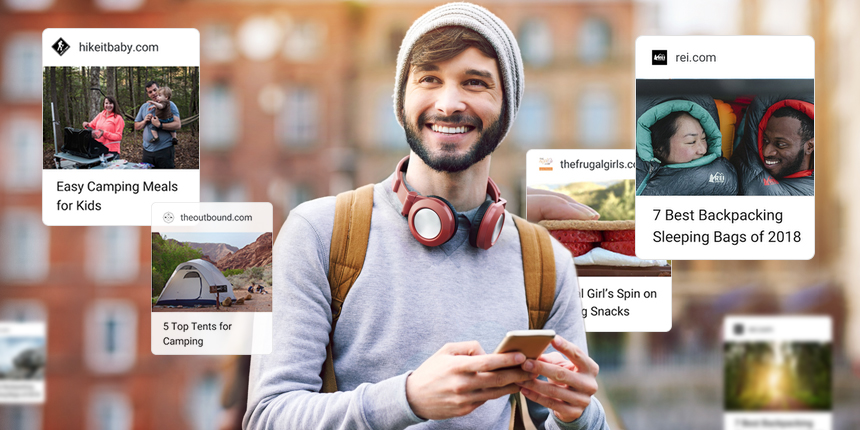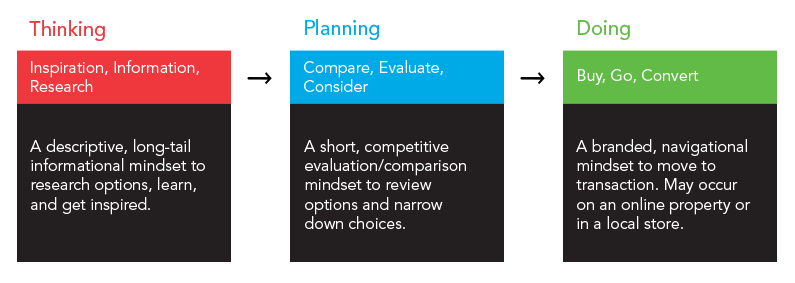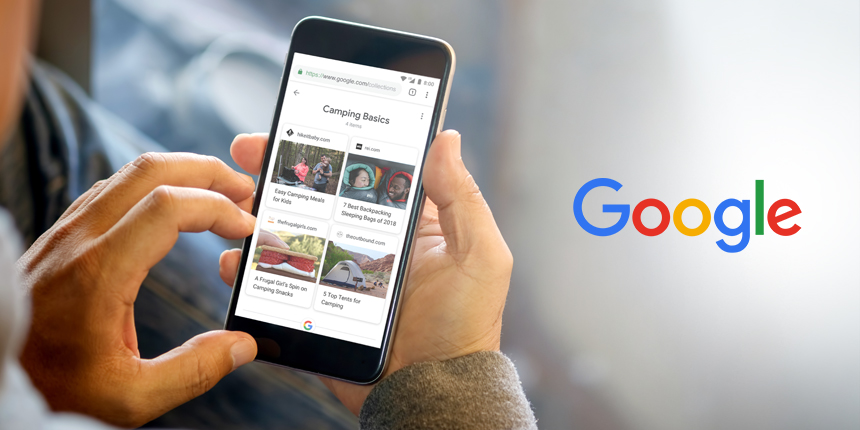Google turned 20 last month (let that sink in for a moment…). To celebrate, they released a series of updates intended to represent a “fundamental transformation” in how we think about search. We assume there was birthday cake, too.
The key changes are focused on personalising the search journey and enhancing visual search using AI and machine learning. But what does that mean, exactly?
-
Google is getting better at understanding your needs
To make the most of previous search activity, Google will be introducing Activity Cards and Collections. Now, when you revisit a search term related to a previous query you entered, you’ll see a card with relevant pages you’ve already visited and previous searches you’ve done on this topic.
For example, say you were researching a camping trip. A tab will appear above your results to show your recent findings. As you scroll down the page, you’ll find results and listing organised into thematic categories like “tents” or “sleeping bags”. From these listings, you’ll be able to curate your own collections. This will help reduce the need to backtrack when you’re searching for new information or trying to consolidate what you’ve found.
-
Google will help you find new content
The new topic layer will help Google intelligently surface the type of content you might want to explore next for a given topic. How? By identifying the most relevant articles and videos and organising them into subtopics. This will make it easier to explore your interests, even if you don’t have your next search in mind.
-
Google Discover
Like a curated search feed, Google will be expanding on its current personalised feed, currently called “Discover”. Accessed via the Google homepage on mobile and desktop, Discover will do more to serve up content based on your interests, search history, and stories from publishers you follow.
-
Stories
Following the lead of social giants like Snapchat, Instagram, and Facebook, this new feature will allow publishers to create social media-like AMP images and videos, and publish them to Google Images and the Discover feed.
-
Algorithm updates
In the past, the quality of an image and relevance of the page it appeared on didn’t always correspond with its ranking on Google Images. Going forward, the SEO fundamentals of alt tag, page titles, and captions around the image will become increasingly important sensors for image rank. Google’s image search algorithm will also be more likely to prioritise images from pages where the picture is central and higher up on the page, rather than towards the bottom or in the footer. Placement matters!
-
Google Lens
A new AI-powered feature will be directly integrated into Google Images, allowing users to search for specific items within photos. This new feature changes the game when it comes to relevant search context and how we categorise and find images on the web.

What does it all mean for content and SEO?
Google’s updates are driven in part by the evolution of user expectations for searching and discovering digital content. Another driving force behind these new features appears to be a move by Google to keep people on the search page longer, much in the same way that the original knowledge graph intended.
For brands, it’s increasingly important to think of your website’s organic content as not only your website, but also as a data source for search engines. As Google seeks to truly understand user interests and intent without even conducting a search, metrics like keyword ranking and organic visits to a page may no longer paint a whole picture of the success of your website’s content.
Appearing in the knowledge graph or the Discovery feed may, in fact, lead to a reduction in organic traffic to your website because the content is answering high-level questions directly on the SERP. It seems, in this case, that content can actually be too good.
Consider content context
Google’s emphasis on advancing visual search is exciting, especially for brands (particularly retailers) that rely heavily on images to sell their products. The changes—aimed at helping people find information visually and shop for products—mean that some basic SEO principles are now more important than ever.
Starting this week, Google will show more context around images, including captions that show the title of the web page where each image is published. So you will want to make sure that you’re leveraging this opportunity to drive traffic to your site. Make sure the title tag on the page is relevant and descriptive of the image. And remember: the authority of the webpage behind the image is going to be an important ranking factor, as will the placement of the image on the page.
From answers to journeys
It’s no surprise Google used the word “journey” used multiple times in its official announcement. Ben Gomes, VP of Search at Google, characterises the first of the three “shifts” that will define the next chapter of search as a movement “from answers to journeys”.
Features like the Activity Card are designed to give users a more continuous and organic search experience. By allowing users to pick up where they left off in search, Google’s embraces the fact that purchasing decisions don’t happen in a vacuum. For brands, only a deep understanding of audience needs and pain points at every stage of the customer journey can ensure content is aligning with the user’s intent at their time of need.
Additionally, Google’s President of the Americas, Allan Thygesen, recently posited user intent as “the new funnel“. At DAC, we couldn’t agree more—we devise and deliver client programs that are inherently designed to pay off user intent via a Thinking, Planning, Doing framework:

In other words, we’re purpose-built to achieve success in the changing landscape of search. Applying our data-driven approach to digital strategy, we help clients meet their audiences in the right place, with the right content, in the micro-moments that matter most.
To learn more about how you can stay ahead in the ever-changing world of digital, Contact DAC!




